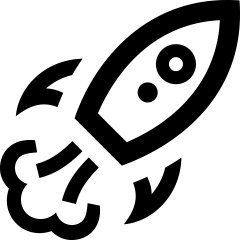Weakly Supervised Cell Segmentation in Multi-modality High-Resolution Microscopy Images¶
Cell segmentation is usually the first step for downstream single-cell analysis in microscopy image-based biology and biomedical research. Deep learning has been widely used for image segmentation, but it is hard to collect a large number of labeled cell images to train models because manually annotating cells is extremely time-consuming and costly. Furthermore, datasets used are often limited to one modality and lacking in diversity, leading to poor generalization of trained models. This competition aims to benchmark cell segmentation methods that could be applied to various microscopy images across multiple imaging platforms and tissue types. We frame the cell segmentation problem as a weakly supervised learning task to encourage models that use limited labeled and many unlabeled images for cell segmentation as unlabeled images are relatively easy to obtain in practice.
This competition has four main features:
- Weakly supervised task setting: limited labeled patches + many unlabeled images
- Aims to benchmark versatile cell segmentation algorithms;
- Testing images include whole-slide image (~10,000x10,000);
- Evaluation metrics: we focus on both segmentation accuracy and efficiency.

 News¶
News¶
2024.03.26: Our manuscript has been published in Nature Methods! https://www.nature.com/articles/s41592-024-02233-6
@article{NeurIPS-CellSeg, title = {The Multi-modality Cell Segmentation Challenge: Towards Universal Solutions}, author = {Jun Ma and Ronald Xie and Shamini Ayyadhury and Cheng Ge and Anubha Gupta and Ritu Gupta and Song Gu and Yao Zhang and Gihun Lee and Joonkee Kim and Wei Lou and Haofeng Li and Eric Upschulte and Timo Dickscheid and José Guilherme de Almeida and Yixin Wang and Lin Han and Xin Yang and Marco Labagnara and Vojislav Gligorovski and Maxime Scheder and Sahand Jamal Rahi and Carly Kempster and Alice Pollitt and Leon Espinosa and Tâm Mignot and Jan Moritz Middeke and Jan-Niklas Eckardt and Wangkai Li and Zhaoyang Li and Xiaochen Cai and Bizhe Bai and Noah F. Greenwald and David Van Valen and Erin Weisbart and Beth A. Cimini and Trevor Cheung and Oscar Brück and Gary D. Bader and Bo Wang}, journal = {Nature Methods}, volume={21}, pages={1103–1113}, year = {2024}, doi = {https://doi.org/10.1038/s41592-024-02233-6} }
2023.06.05 The competition proceeding has been published on PMLR https://proceedings.mlr.press/v212/
2022.12.07 The winners have been announced on the awards page. It would be highly appreciated if you could fill out this form (\<2min) to help us improve future challenges.
2022.11.22 The competition will be organized as 3-hours online event during NeurIPS (8-11 am, 7 December. EST). Link (Please login with your NeurIPS registration email.)
2022.11.5 The complete paper submission deadline is 30 November. Please submit the paper via openreview.
2022.10.15 Participants can make testing submission now. Each team only has one chance. Please send *the download link to docker, a sanity video (demo) and a paper draft (template)* to NeurIPS.CellSeg@gmail.com. Please also include your leaderboard (LB) score in the subject.
We will publish a proceeding in the Proceedings of Machine Learning Research to present the participants' methods.
Welcome to contribute non-public microscopy images for the final
testing test (send email to NeurIPS.CellSeg@gmail.com). We will give
you credits on the organizer list and the summary paper.
Public datasets are allowed to use. Please post your (freely
available) external datasets links forum before 31st Aug. We also maintain a list of
the external datasets (Google
Doc,
Tencent Doc).
 Timeline¶
Timeline¶
June 15, 2022: Launch the competition and release training data.July 15, 2022: Release validation (tuning) set. Validation submission starts.August 15, 2022: Deadline for the first validation submission.September 15, 2022: Deadline for the second validation submission.October 15, 2022: Deadline for the third validation submission. Testing submission starts.October 31, 2022: Deadline for final testing submission. Extended to November 2 because the evaluation platform is down recently.November 15, 2022: Invite top teams to prepare presentations.EST 8-11 AM, December 7, 2022, Announce the final results.- Open submission
 How to participate¶
How to participate¶
Stage 1. Join the competition and download the data¶
- Register on the website and verify your account.
- Click the green 'Join' button to participate in the Challenge. Your application will be automatically approved.
- Download the dataset.
Stage 2. Develop your model and make submissions¶
- Each team can submit three times per day at https://neurips22-cellseg.grand-challenge.org/evaluation/testing/submissions/create/
- Submission should include a zip file of the segmentation results and a description of the algorithm.
Institution¶



